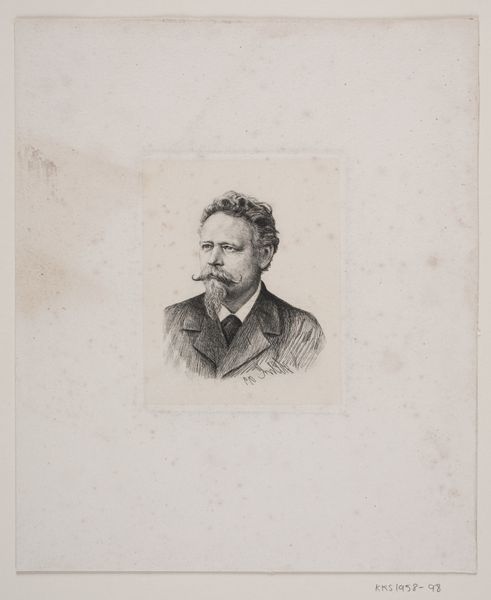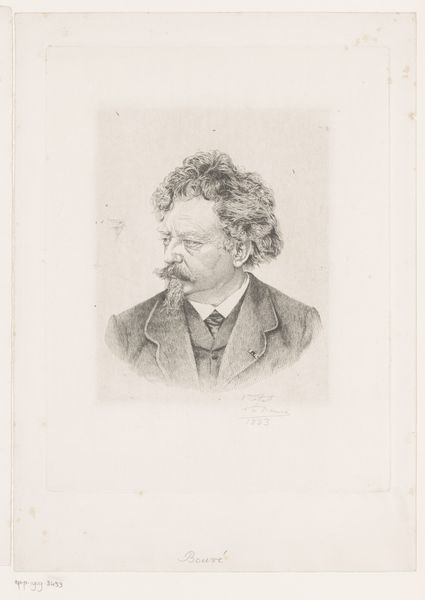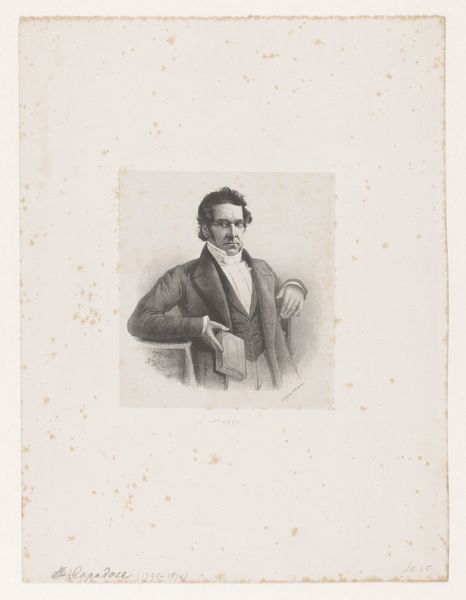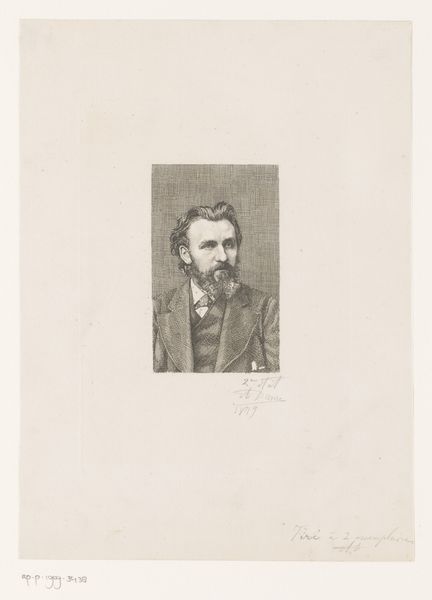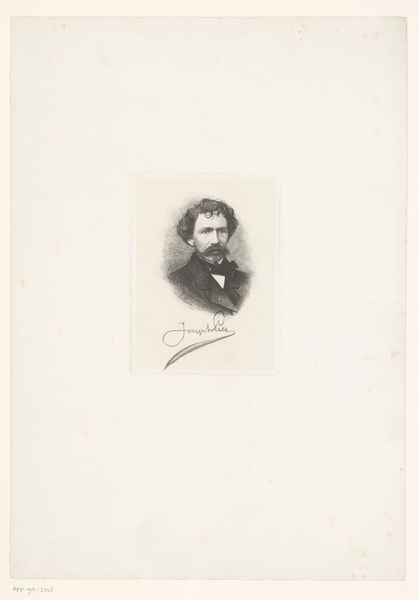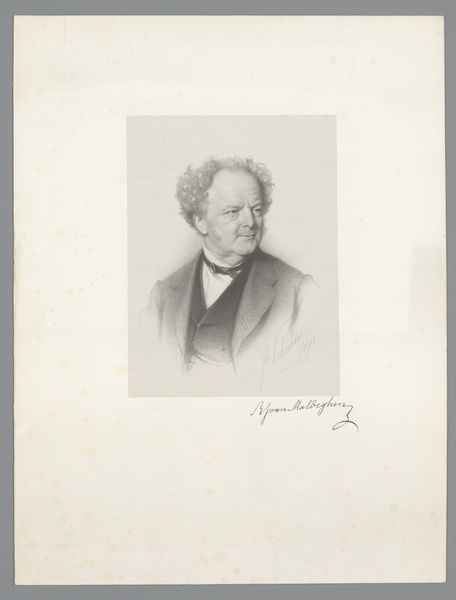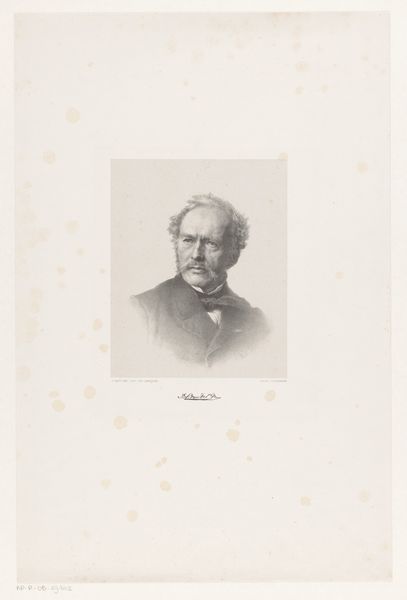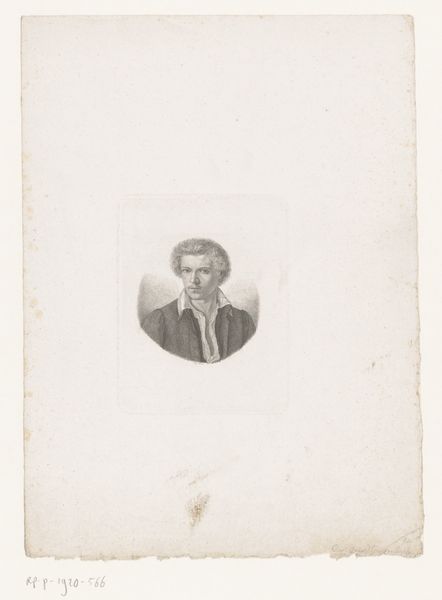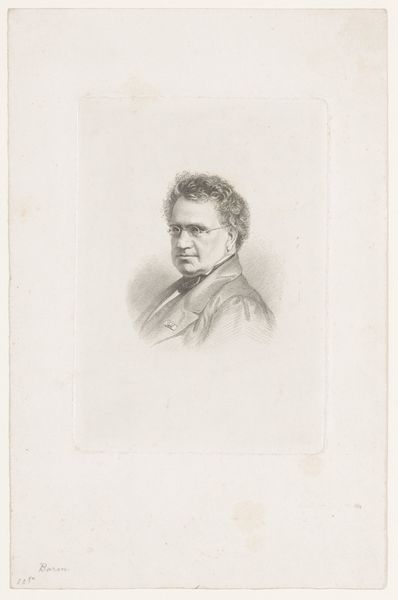
drawing, pencil
#
portrait
#
pencil drawn
#
drawing
#
pencil sketch
#
portrait reference
#
pencil drawing
#
pencil
#
academic-art
#
realism
Dimensions: height 307 mm, width 237 mm
Copyright: Rijks Museum: Open Domain
Editor: Here we have Auguste Danse’s 1883 pencil drawing, "Portret van een onbekende man, mogelijk Bouvé" displayed at the Rijksmuseum. It's incredibly detailed, especially considering it's just pencil on paper. It feels very formal and considered. What stands out to you? Curator: The subject's very conventional presentation certainly aligns with the academic art traditions gaining traction within the public sphere during the late 19th century. Think about how institutions like the Rijksmuseum were solidifying their role as arbiters of taste. Portraits like these served a purpose; to elevate and commemorate figures, often reinforcing social hierarchies. Who do you think these types of portraits were created for and whom were they meant to serve? Editor: I suppose the rising middle class would seek validation through art, right? Were they displayed publicly or more for private collections? Curator: Exactly! And the accessibility of portraiture at this time speaks volumes about a shifting power dynamic. The sitter’s posture, the precise draftsmanship – it’s all intended to project respectability and perhaps, even a claim to status. How does the work itself, the medium and the technique, reflect the broader social changes of that era? Editor: It’s almost like the rising merchant class was attempting to mirror the aesthetics of the aristocracy. It definitely feels more like propaganda than pure artistic expression. Curator: An interesting way to frame it! What do you make of its current home in the Rijksmuseum then? Editor: Well, it's removed from that initial socio-political purpose. Now it is valued for its artistic and historical merit, providing insight into a particular moment in time, maybe even deconstructing these historical structures. Curator: Precisely. The institution re-contextualizes the work, opening new lines of inquiry. Editor: That’s a perspective shift I hadn’t fully considered before! Thanks for the insight.
Comments
No comments
Be the first to comment and join the conversation on the ultimate creative platform.
